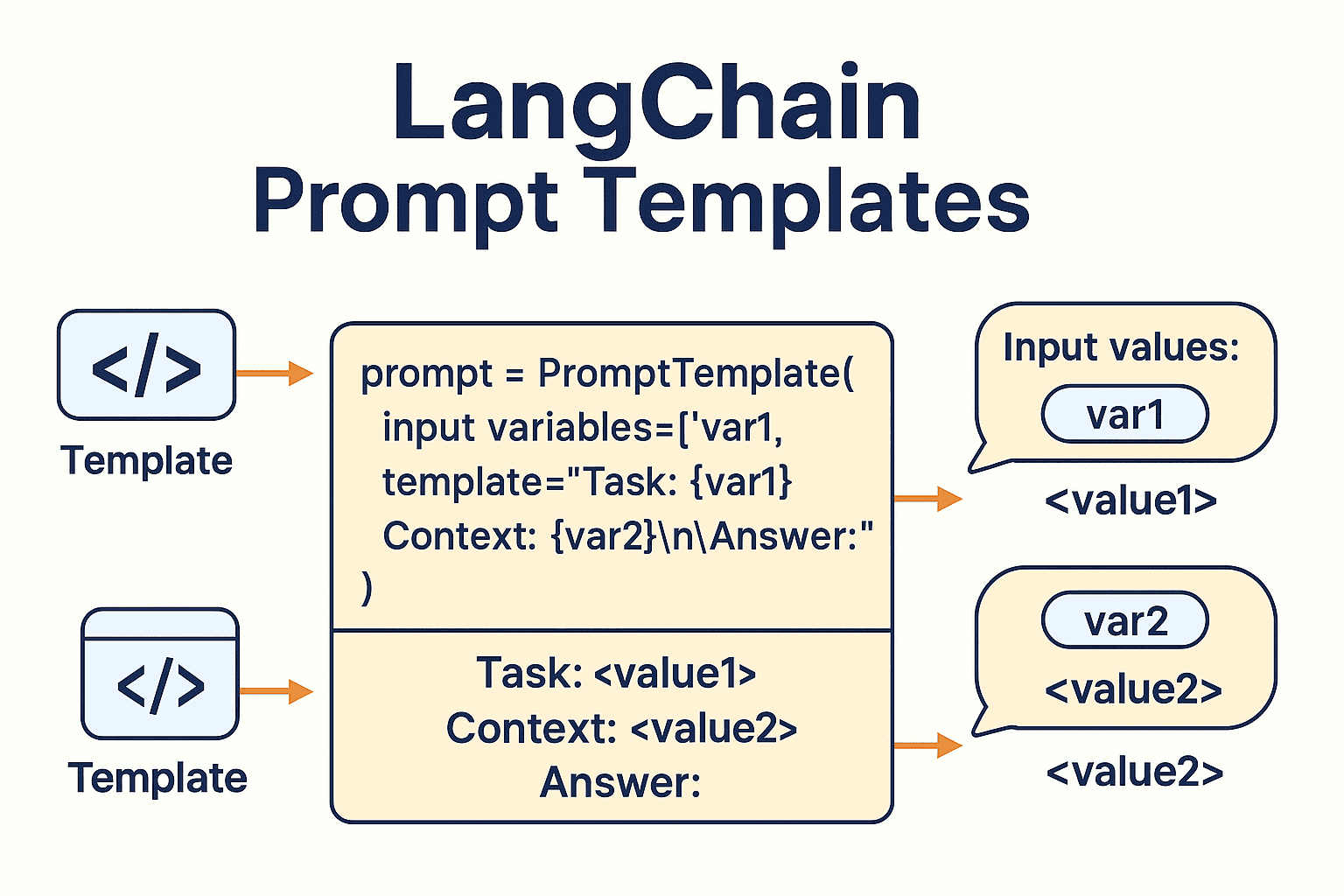
Hands-On with LangChain Prompt Templates
Prompt engineering is the beating heart of building effective LLM-powered apps. In this post, we’ll explore PromptTemplate from LangChain — a powerful abstraction that lets you structure reusable, parameterized prompts for various tasks like Q&A, summarization, and classification.
🔗 This post is part of our LangChain Mastery Series
📌 Module: LangChain Components → Prompt Templates
💡 Why Prompt Templates?
Prompt templates allow developers to:
- 🔁 Reuse prompts across different inputs
- 🧠 Maintain consistent instructions
- 🔒 Avoid prompt injection errors by controlling inputs
🧱 Core Syntax
from langchain.prompts import PromptTemplate
template = "Translate this sentence to French: {sentence}"
prompt = PromptTemplate(input_variables=["sentence"], template=template)
prompt.format(sentence="Hello, how are you?")✅ Output:
Translate this sentence to French: Hello, how are you?
You can plug this prompt into any LangChain chain, LLM model, or agent.
🔧 Building a Contextual Q&A Prompt
template = """
Use the context below to answer the user's question.
Context: {context}
Question: {question}
Answer:
"""
qa_prompt = PromptTemplate(
input_variables=["context", "question"],
template=template
)This format is useful for retrieval-augmented generation (RAG) pipelines.
🧪 Mini Exercises with Solutions
Sentiment Prompt
template = "Classify the sentiment of this review: {review_text}"
sentiment_prompt = PromptTemplate(
input_variables=["review_text"],
template=template
)Multi-Input Prompt
prompt = PromptTemplate(
input_variables=["context", "question"],
template="Context: {context}\nQuestion: {question}\nAnswer:"
)Best Practices
✅ Keep prompts short but instructive 🔄 Modularize for easy versioning and testing ⚠️ Avoid hardcoding variable values 📚 Document template structure and expected inputs
🚀 TL;DR
• PromptTemplate enables clean and reusable prompts.
• Accepts dynamic inputs using {var} syntax.
• Works seamlessly across LangChain chains and agents.
• Essential for building scalable LLM applications.🔗 What’s Next?
In the next component, we’ll explore Memory — how LangChain stores conversational history across interactions.
Want to see this integrated into a chatbot or tool? Drop a comment or follow along in the LangChain Series!
Enjoyed this post? Join our community for more insights and discussions!
👉 Share this article with your friends and colleagues 👉 Follow us on